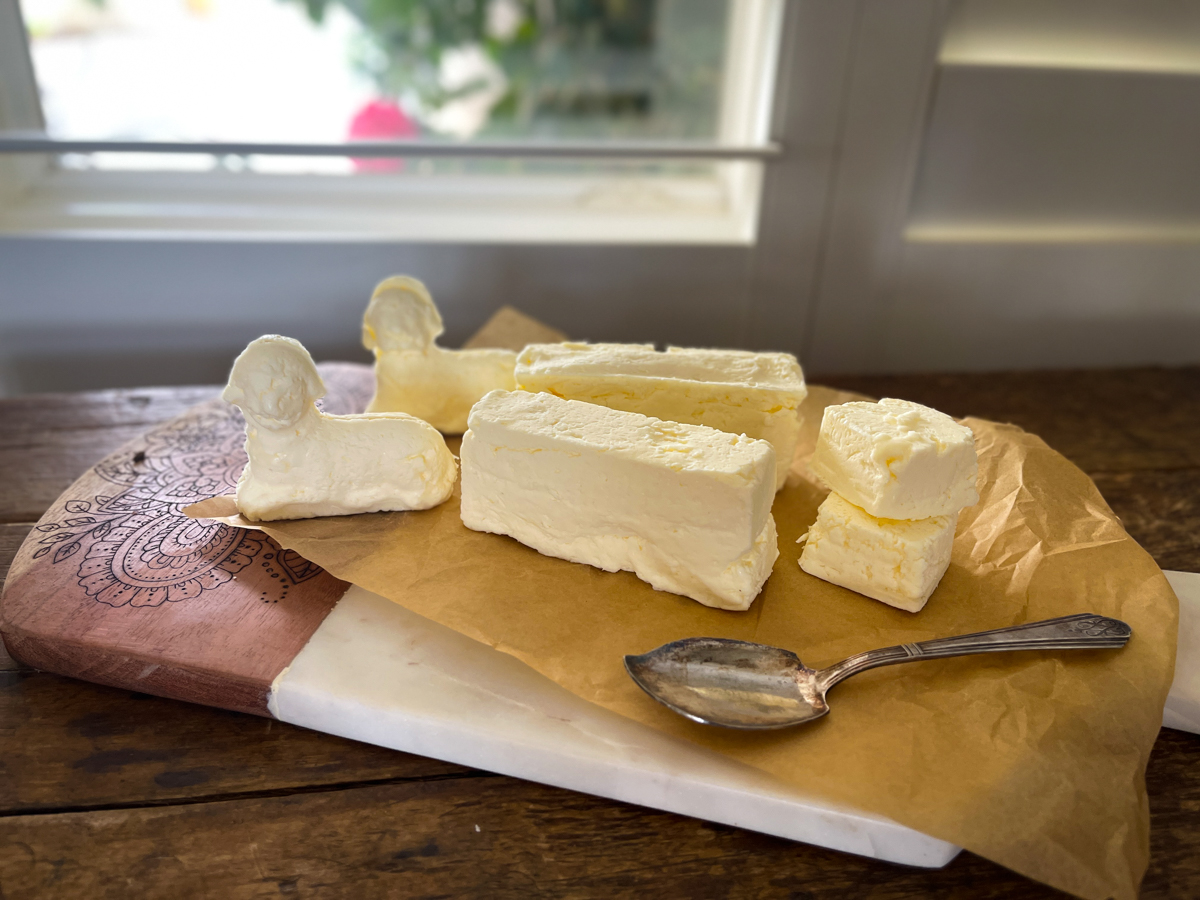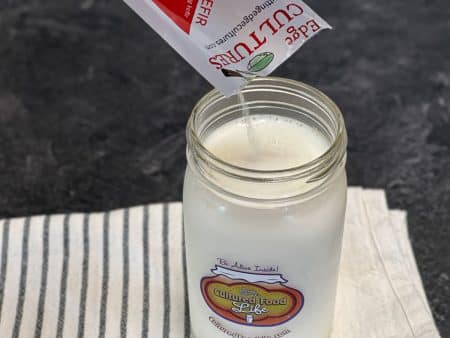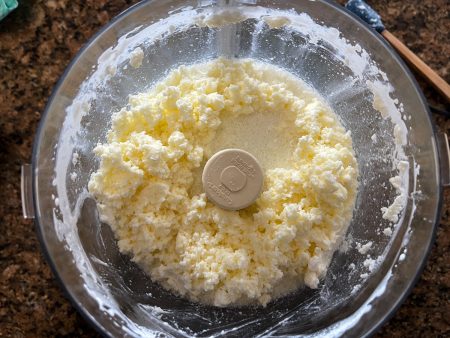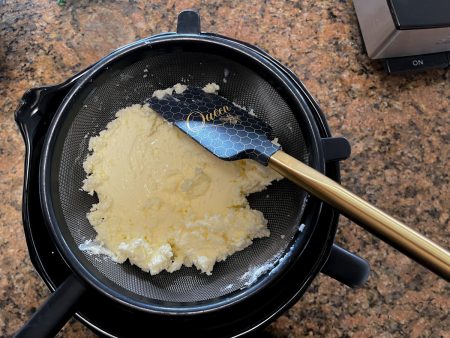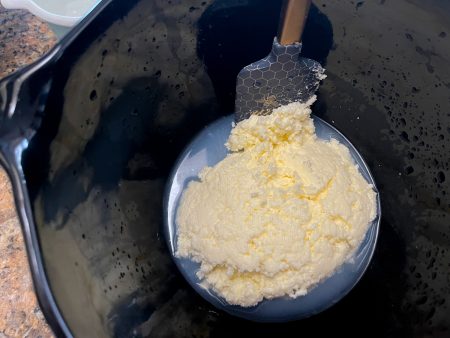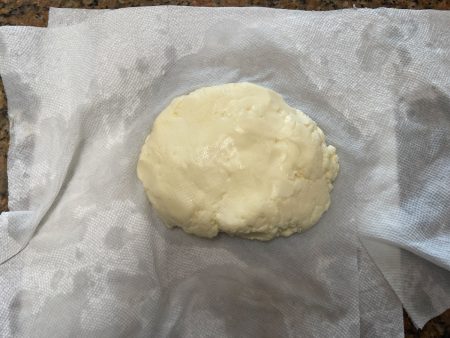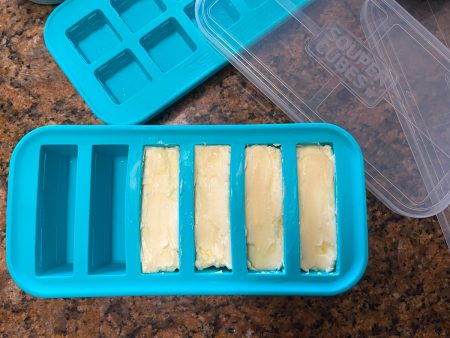
Cultured Kefir Butter
Reasons To Have More Vitamin K2
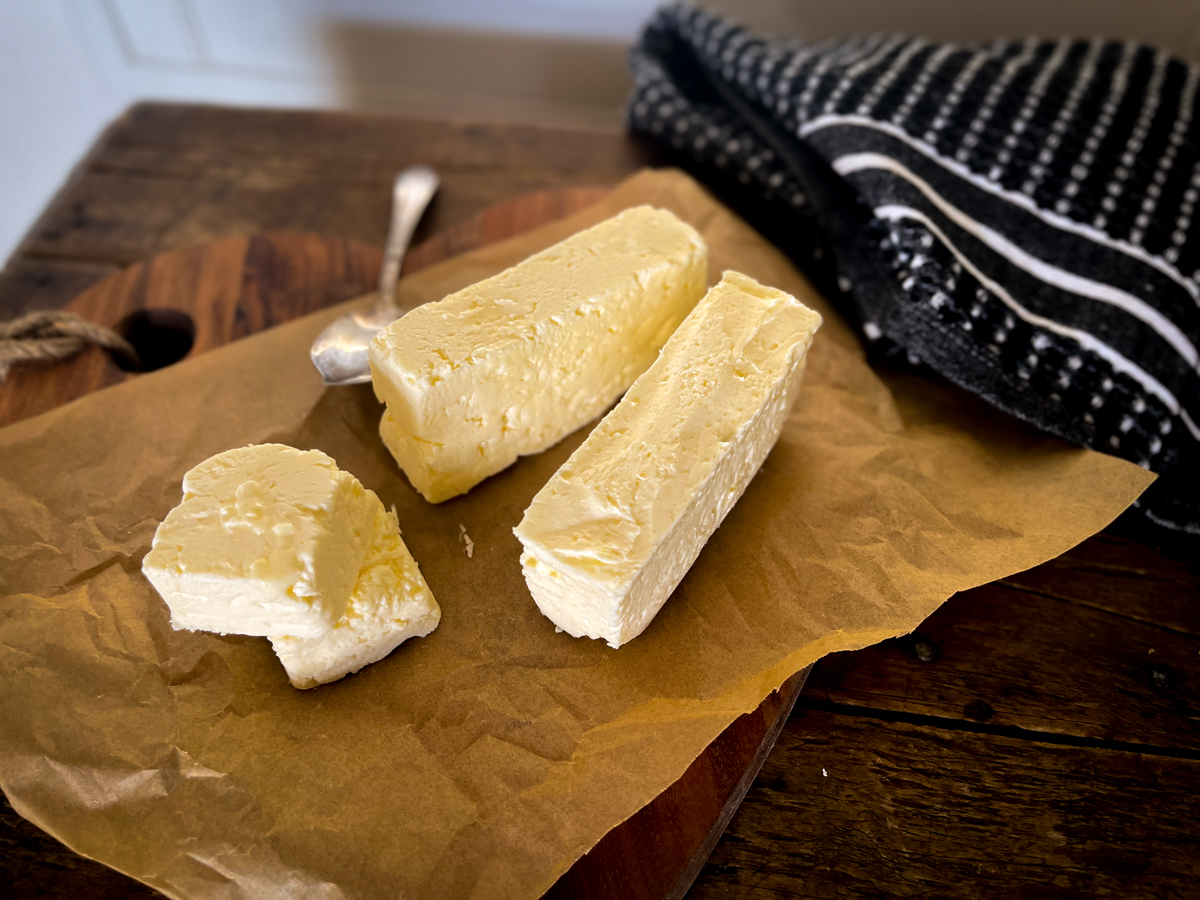 A few weeks ago I went to 123 Farm to speak, and honestly, one of the big reasons I go is to get their cultured butter made with kefir. It is so crazy good that it inspired me to make my own kefir butter. Certain cultures prized butter as a superior, nutrient-dense food that was made from cows eating lots of lush, green grasses. Butter that is produced from cows eating growing green grasses contains a very high amount of vitamin K2 which has been referred to as the X factor by Dr. Weston Price. He has been called the “Isaac Newton of Nutrition.” He traveled the globe in the early 20th century studying the relationship between diet and disease in different populations.
A few weeks ago I went to 123 Farm to speak, and honestly, one of the big reasons I go is to get their cultured butter made with kefir. It is so crazy good that it inspired me to make my own kefir butter. Certain cultures prized butter as a superior, nutrient-dense food that was made from cows eating lots of lush, green grasses. Butter that is produced from cows eating growing green grasses contains a very high amount of vitamin K2 which has been referred to as the X factor by Dr. Weston Price. He has been called the “Isaac Newton of Nutrition.” He traveled the globe in the early 20th century studying the relationship between diet and disease in different populations.
After his travels, he conducted groundbreaking research back in his laboratory. He was able to pinpoint what nutrients were responsible for the extraordinary health and physical development of the native peoples he studied. He was on a constant search to find the causes of dental decay and physical degeneration that he observed in his dental practice. He discovered that the non-industrial diets were high in some unidentified nutrients which seemed to provide protection against tooth decay and many chronic diseases. He referred to this mystery nutrient as “Activator X” (the X factor) which is now believed to have been vitamin K2. [1]
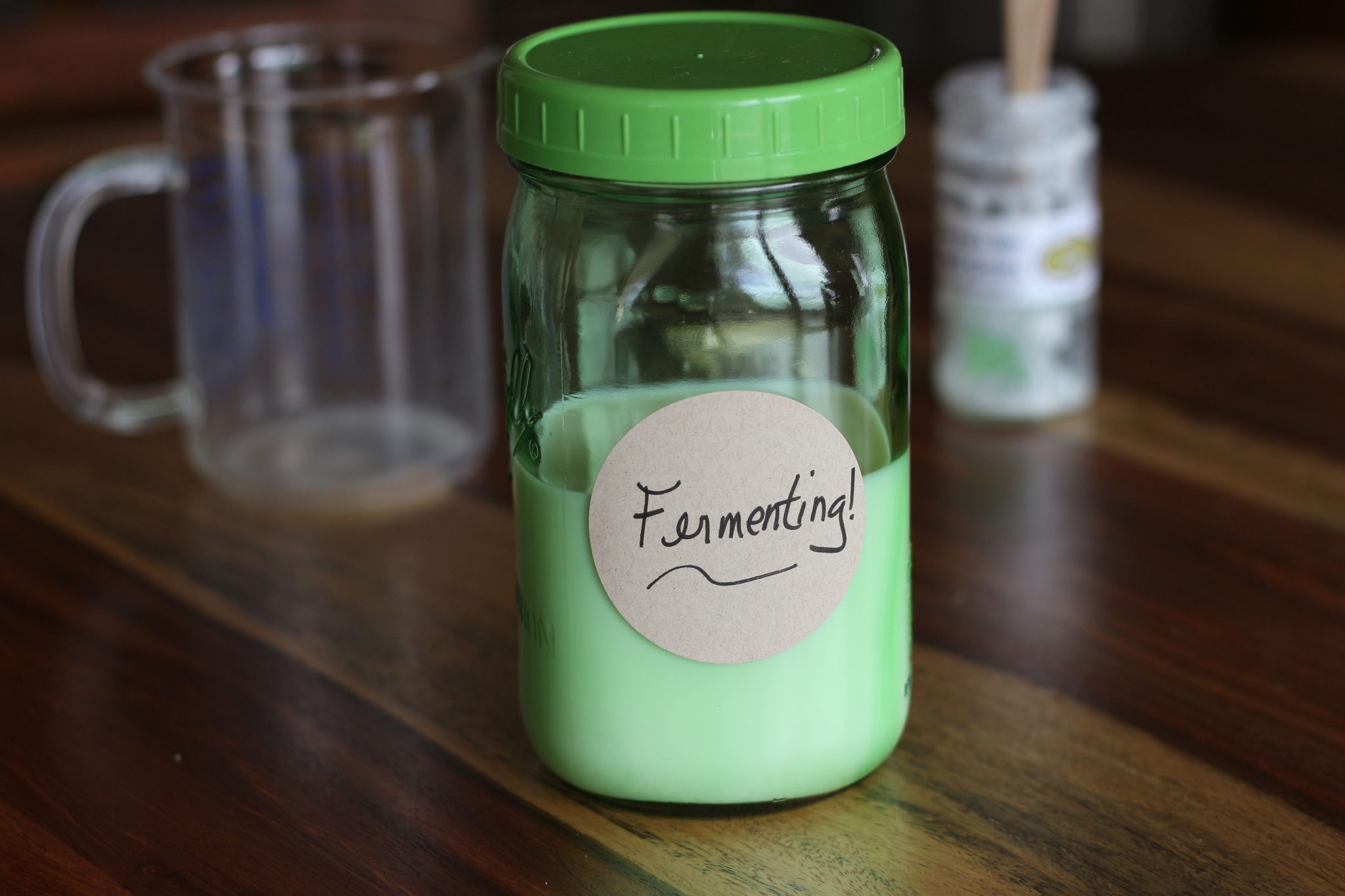
Vitamin K2 and K1
Most individuals have believed that the benefits of vitamin K2 are limited to its role in blood clotting and that vitamins K1 and K2 are simply different forms of the same vitamin—with the same functions. However, the role of vitamin K2 in the body extends far beyond clotting and may help in the prevention of chronic diseases. Vitamin K2 has many functions not associated with K1 - so many that researchers insist that K1 and K2 are best seen as two different vitamins entirely. Most people are deficient and not getting enough Vitamin K2.
Vitamin K2 is called menaquinone (MK) and is predominantly of microbial origin. The K2 is produced by gut bacteria in your large intestine and many researchers suspect that broad-spectrum antibiotics contribute to a K2 deficiency. Cultured foods such as kefir, sauerkraut, certain cheeses, and natto contain substantial amounts of vitamin K2. The body easily absorbs what it needs thanks to the microbes in these foods. Vitamin K is also found abundantly in butter from cows who have grazed on grasses—especially wheatgrass and alfalfa - in a lush green state of growth. Commercial butter is not a significantly high source of vitamin K2.
K2 Health Benefits
- Vitamin K2 has been shown to reduce the risk of prostate cancer by 35 percent. [2] It also protects against leukemia and might even be used as a treatment for leukemia in the future [3]
- Vitamin K2 may help protect us from heart disease by reducing calcium deposits in the arteries. Some studies have even shown it can reverse arterial calcification[4]
- Vitamin K2 helps form strong bones and helps the skin stay healthy with the prevention of wrinkles, sagging skin, and varicose veins. Vitamin K2 is a necessity for vitamin A to do its job which is maintaining proper skin cell proliferation.
- Dr. Price talked extensively about the role of K2 in tooth health and helping to keep the teeth cavity resistant by helping dentin produce osteocalcin. Osteocalcin deposits calcium into the enamel.
- Brain health can improve by eating more vitamin K-rich foods. These foods have been shown to sharpen memory and stave off dementia in older adults[5]
- The immune system is greatly enhanced by vitamin K2, specifically as it fights inflammation. It strengthens your immune cells, allowing you to fight off pathogens better. [6,7]
It's clear that vitamin K plays an essential role in body function, and I've seen it help my family tremendously - especially in our early days of eating cultured foods
Making Your Own Cultured Butter
If you are lucky enough to get raw cream from cows eating lush green grasses, you should make your own butter. If you don't have that luxury, then culturing your butter with kefir is a wonderful way to get the benefits too. It will load your butter with probiotics and the microbes will produce more vitamin K2 as well. It's also easy and fun, and wow, is it delicious. You'll wonder where this butter has been all your life — it's fabulous. You can make kefir butter with kefir grains, but often the grains get stuck in the thick cream. We recommend using Easy Kefir which is a powder made from kefir grains, and you don't have to dig out the kefir grains. You will need to add a little food to your kefir and cream while it is fermenting, like a prebiotic or a teaspoon of sugar or date paste, to feed the microbes while they're making your cream into cultured butter. Check out the recipe below and fall in love with cultured kefir butter.
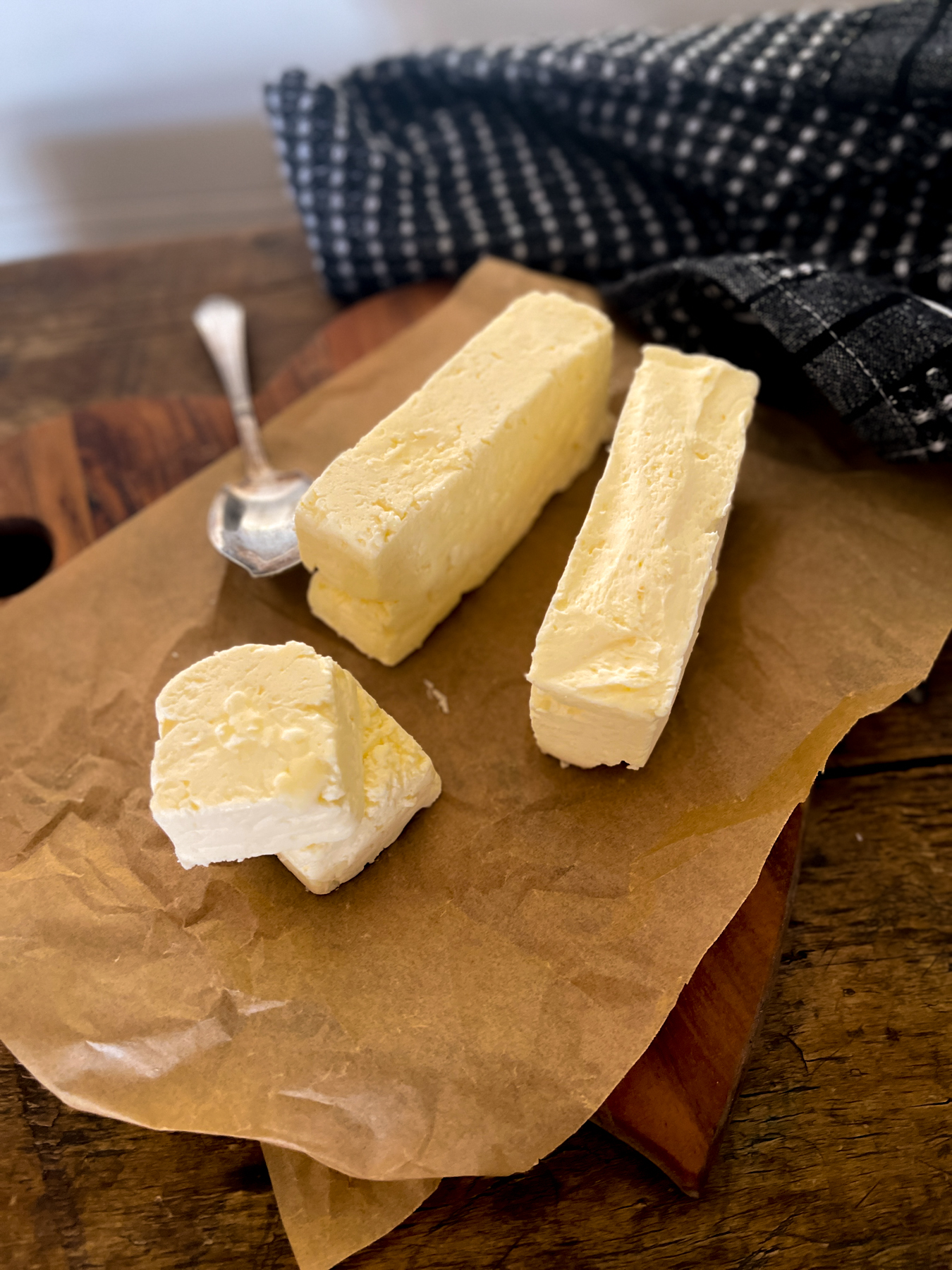
Kefir Butter
Cultured Kefir Butter
Ingredients
- 4 cups cream - raw, pasteurized, or ultra pasteurized will work
- 1 sachet Easy Kefir - use a fresh sachet when making butter
Every ingredient with a link was selected by me to make it easier for you. I may receive a small affiliate commission if you buy something through my links. Thank you! ❤️
Instructions
- Place cream and Easy Kefir sachet, in a quart jar with a lid. Let sit for 24 hours or until thickened and cultured.
- You can place the butter into a mold or form it into sticks or make a round ball. Place it in the refrigerator until you want to use it or you can also freeze it. It should last several weeks in the fridge.
- You can sprinkle it salt if you'd like. It helps to preserve it but I usually skip this and leave it unsalted. You can add ½ teaspoon of salt per cup (1 stick) of butter.
Notes

References:
- https://link.springer.com/chapter/10.1007/978-1-4899-1789-8_19
- https://www.nutraingredients.com/Article/2008/04/09/Vitamin-K2-linked-to-lower-prostate-cancer-risk
- https://www.ncbi.nlm.nih.gov/pubmed/16142303
- https://www.ncbi.nlm.nih.gov/pubmed/18722618/
- https://www.ncbi.nlm.nih.gov/pubmed/26923488
- https://www.vitafoodsinsights.com/vitamins-and-minerals/overlooked-benefits-vitamin-k-immune-system-0
- https://www.naturalproductsinsider.com/immune-health/potential-vitamins-d-and-k2-immune-system
Listen To My Podcast
Cultured Butter is crazy good, fun to make, and loads you with Vitamin K2. This is a very important nutrient that everybody needs more of. Tune in to learn more.
Are you on the list?
Sign up today and I'll send you my free Getting Started Guide!
Each week I'll send you updates, tips, recipes, and more! You might even be a winner of my weekly giveaway! (starter cultures, memberships, and more!)
Come be a part of my cultured food family!

